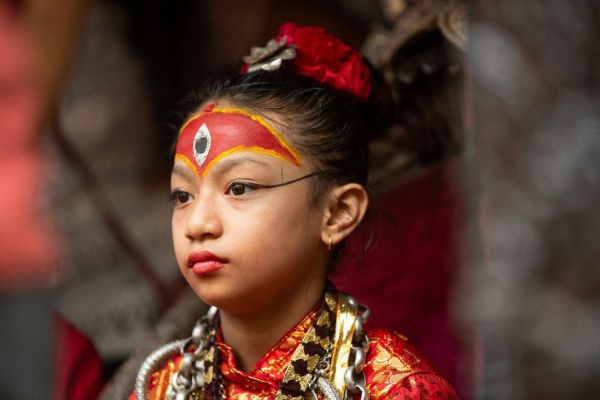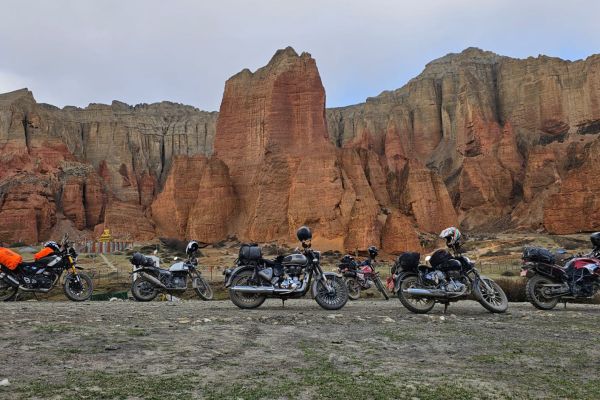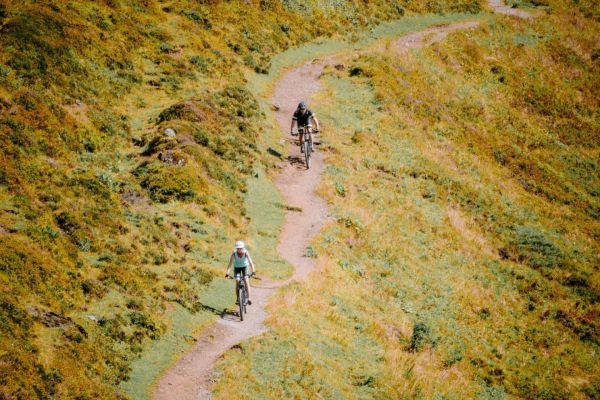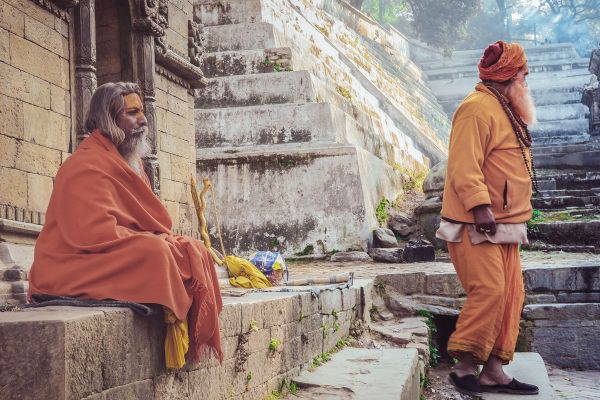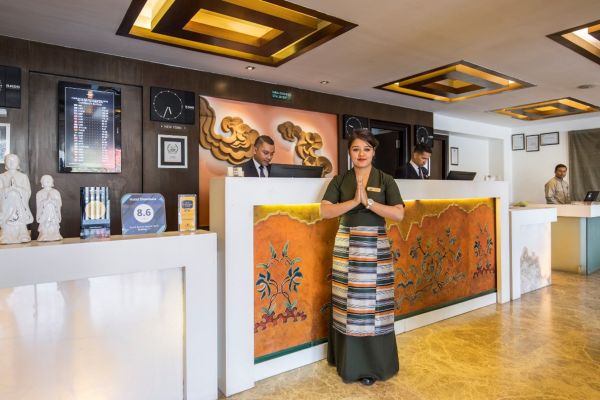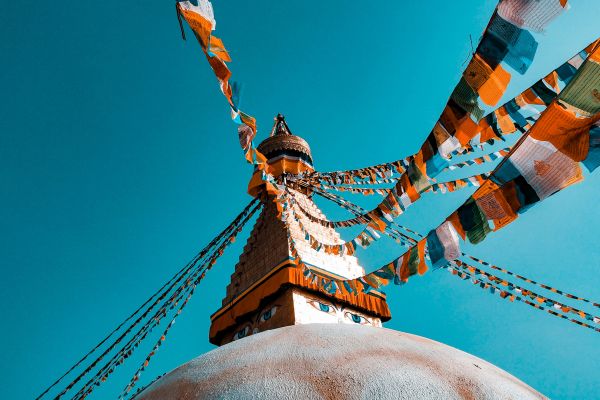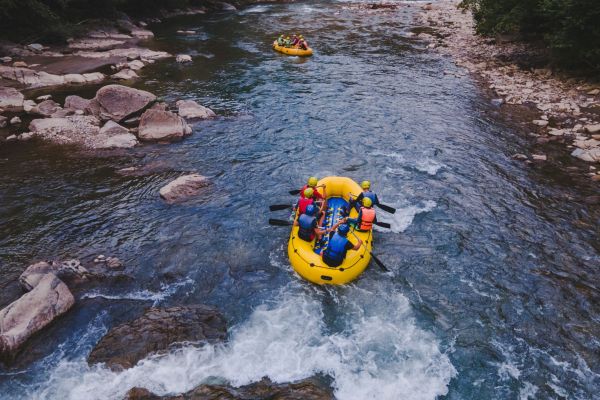A Thousand Years of Secrets – Indra Jatra
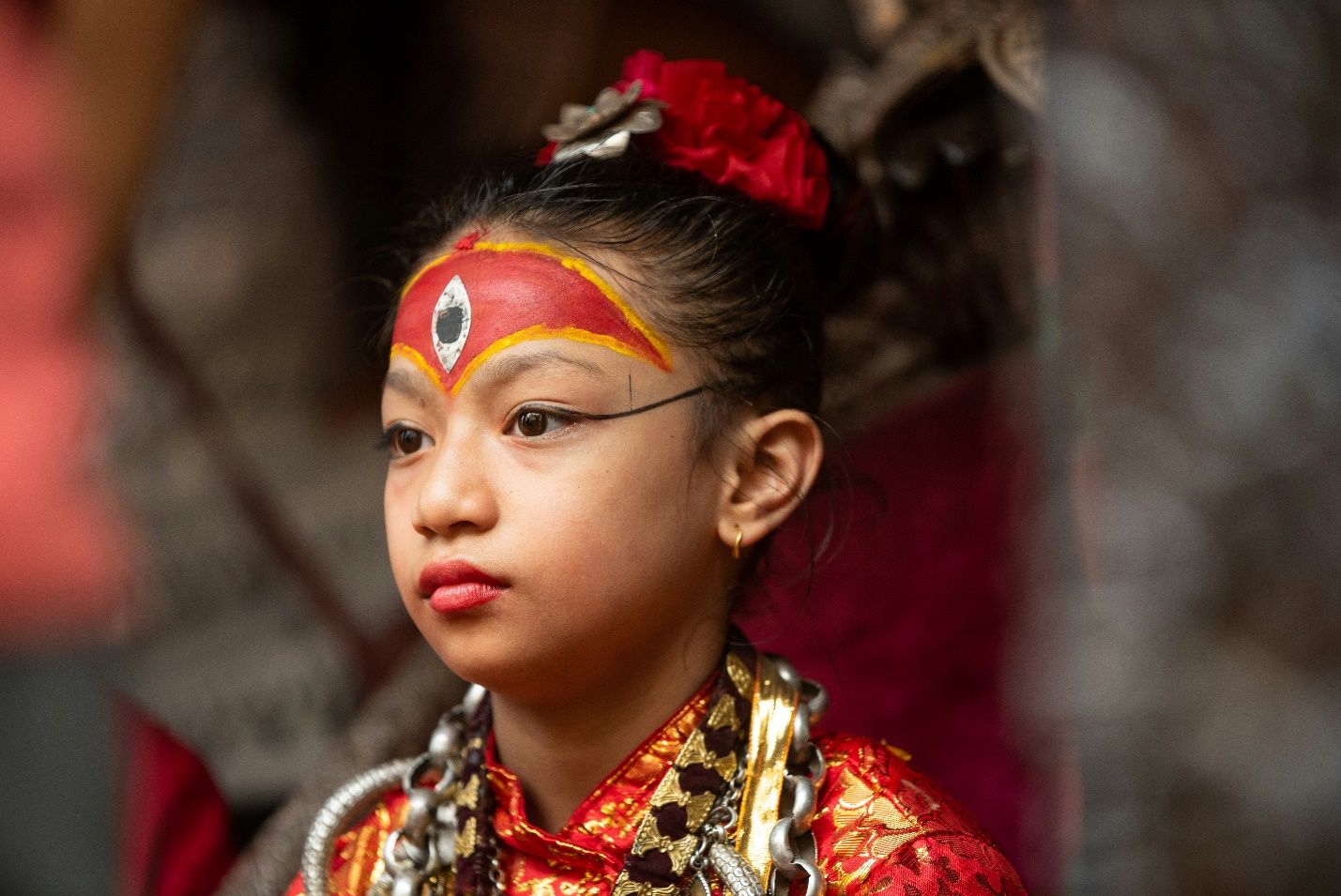
Imagine a city that doesn’t just celebrate a festival, it becomes one. For eight days every September, Kathmandu turns into a living, breathing spectacle for Indra Jatra. It’s part street party, part sacred ritual, and a full-on sensory experience you won’t forget. This is more than a thanksgiving for rain; it’s a living history lesson, a time to honor ancestors, and a beautiful mix of Hindu and Buddhist traditions.
What Is Indra Jatra?
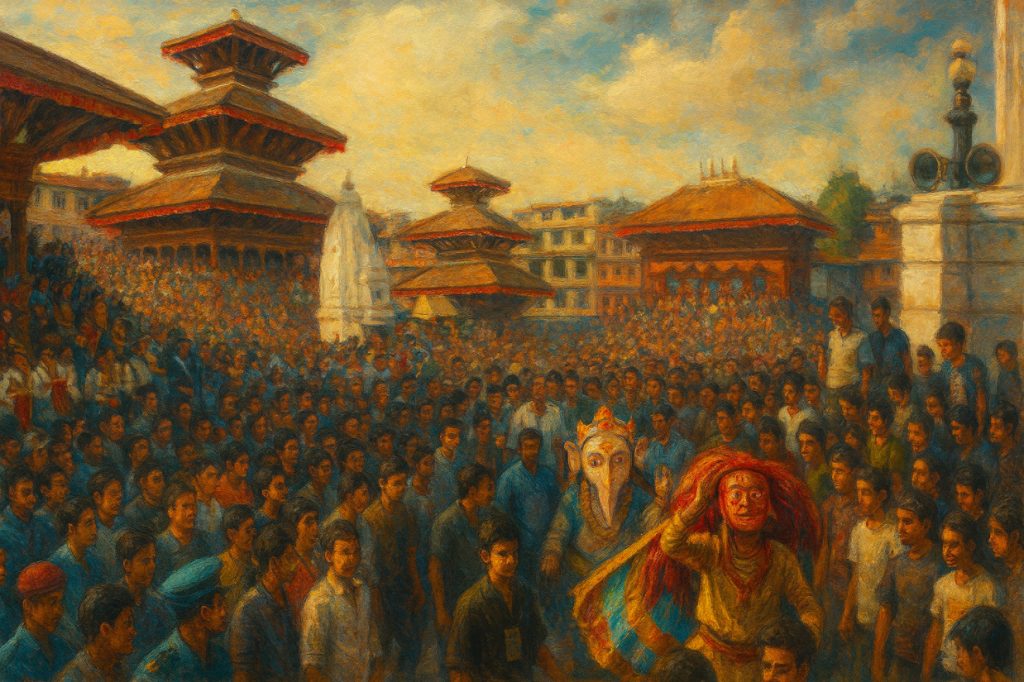
In the local language, it’s called Yenya Punhi, which means “The Birthday Celebration of Old Kathmandu.” The festival goes all the way back to the 10th century when the city was first founded.
The air is thick with the scent of pine and incense. The beat of traditional drums, called dhimay baja, vibrates right through you. Above, prayer flags create a canopy of color, and all around, the bright silk costumes and banners blur into a beautiful, joyful blur. At its core, the festival honors Lord Indra, the god of rain, but it’s also a time when the city’s ancient gods and even ancestors are celebrated.
Why Do They Celebrate? A Tale of a God and His Mother
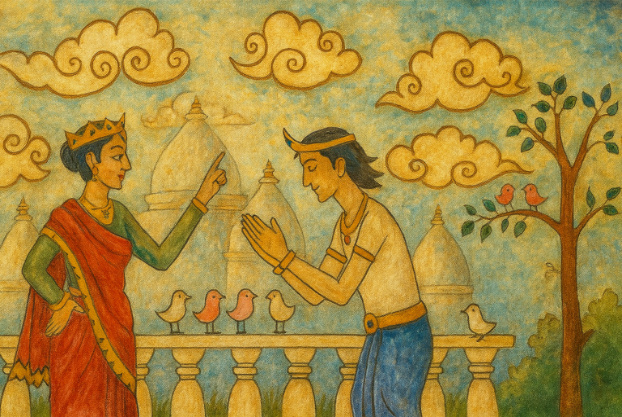
The main story behind Indra Jatra is a captivating tale of a god’s journey and a mother’s promise. Legend says that Lord Indra came to Earth looking for a special flower for his mother, Dagini. He was captured and put in jail, and in her sadness, Dagini came to Kathmandu to find him. When he was finally released, she promised the people plenty of rain for their crops and, more importantly, the freedom of departed souls from the underworld.
This story beautifully connects the real need for a good harvest with the spiritual wish to honor those who have passed on. In the evenings, you’ll see families taking part in Upāku Wanegu, a ritual where they light butter lamps and walk in a procession to honor their ancestors. It’s a powerful sight: a long line of small, flickering lights winding through the dark streets, a quiet moment of memory in the middle of all the celebration.
The Gods Who Walk Among Us
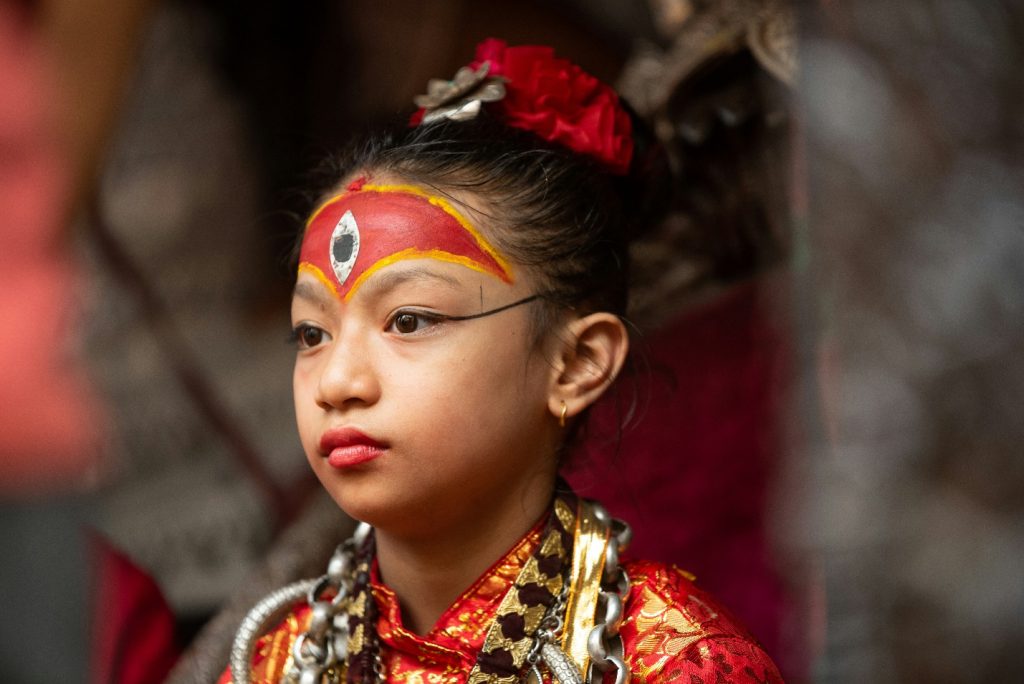
While Lord Indra is a central figure in the festival, it also offers a chance to see some of the most fascinating figures in Kathmandu’s spiritual life.
- Kumari: The most important is the Living Goddess Kumari, a young girl believed to be the living version of the goddess Taleju. Her presence is the main part of the festival’s big event.
- Sweta Bhairava: A fierce and powerful protector god whose scary mask is only shown once a year during Indra Jatra.
- Majipa Lākhey: The famous demon dancer, a protector god whose performances are both amazing and a little intimidating.
As one local expert said, “Kumari is the heart of this festival, a living symbol of divine power and blessing.” Her journey through the city’s narrow streets in a golden chariot is a truly magical and spiritual moment.
The Heartbeat of the Festival: What to See and Do
The eight days of Indra Jatra are a constant show. The festival begins with a powerful symbol: the raising of the Yosin Pole, a huge wooden pillar that marks Indra’s arrival on Earth.
The streets become a stage for amazing performances:
- The Kumari Jatra chariot procession is the main event, a magnificent parade of the Living Goddess.
- Masked dances fill the streets, from the graceful, swaying Devi Pyakhan to the wild, energetic Pulu Kisi (the elephant dance).
- The unveiling of the Sweta Bhairava mask at Durbar Square is a highlight, where people are blessed with a stream of sacred rice beer flowing from its mouth.
As night falls, the air cools and the city’s energy shifts. The loud drums give way to quiet chanting, and the streets are lit by the soft glow of thousands of oil lamps. It’s a treat for your senses and a reminder of Kathmandu’s unique mix of the sacred and the celebratory.
Day-by-Day Highlights of Indra Jatra
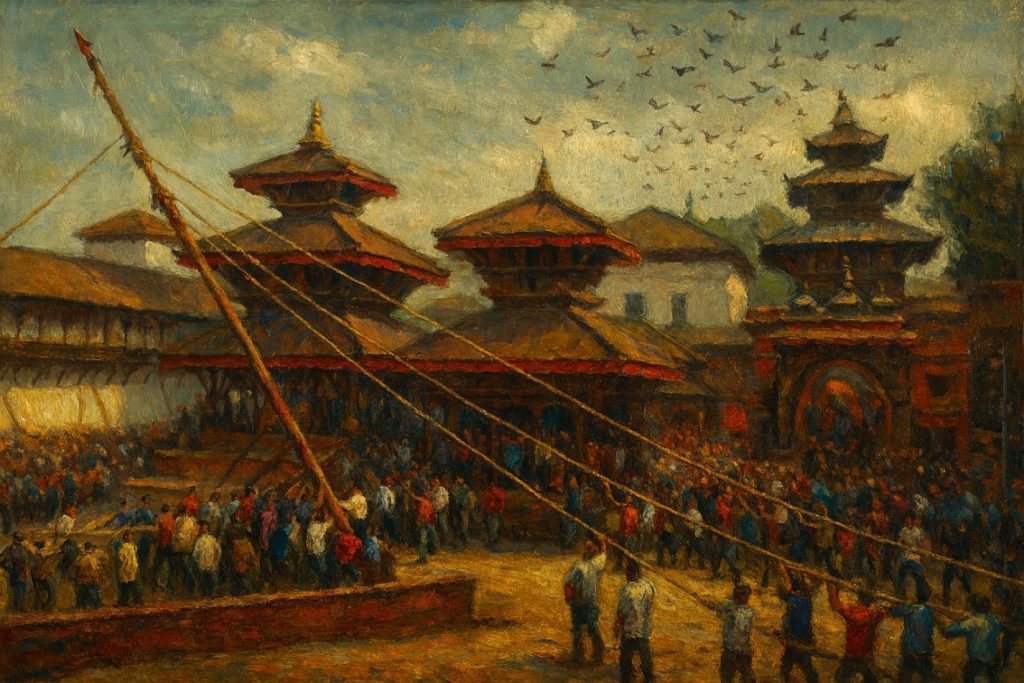
The eight days of Indra Jatra are a constant show. Here’s a look at what you can expect:
Day 1: The Beginning
- Morning: Priests raise the towering Indradhvaja Linga (Yosin pole) at Basantapur Durbar Square. This marks the formal start of the festival.
- Evening: Families light oil lamps in courtyards and temples for Upāku Wanegu, a ritual in memory of ancestors. The city glows softly under thousands of flickering lights.
Days 2 to 4: The Chariot Processions (Kumari Jatra) Perhaps the most awaited part of Indra Jatra, these days are dedicated to the grand chariot parades of the Living Goddess Kumari, along with chariots of Ganesh and Bhairava.
- Day 2 (Kwaneyā): Chariots travel through the southern quarters of the city.
- Day 3 (Thaneyā – Full Moon Night): The procession winds through northern neighborhoods such as Asan and Indra Chowk, accompanied by drums, cymbals, and cheering crowds.
- Day 4 (Nanichāyā): The final procession covers the central areas, a dazzling close to Kumari’s journey through the city.
Days 5 to 7: Dances and Living Legends The streets transform into open-air theaters:
- Majipa Lākhey Dance: A fearsome red-faced demon dance that drives away evil.
- Pulu Kisi Dance: A comical elephant dance, reenacting Indra’s mythical elephant Airavata.
- Devi Pyakhan and Mahakali Dances: Masked performances portraying fierce goddesses protecting the valley.
- Open-air theatre: Plays called Dabu Pyakhan retell age-old stories with humor and satire.
Day 8: The Farewell: The festival concludes with the ceremonial lowering of the Yosin pole, or Yosin Kwathalegu. This symbolizes Indra’s return to the heavens, bringing the festival to a reflective close.
Tips for Visitors: Your Guide to Joining the Celebration
To get the most out of Indra Jatra, a little planning helps a lot.
- Best Places to Watch: Head to Kathmandu Durbar Square, Indra Chowk, and Asan for the best views of the main events.
- Best Time to Go: The afternoons and evenings are when things get exciting with the chariot processions and most of the masked dances.
- Taste of Tradition: Don’t miss out on local Newari foods. Try yomari (sweet rice dumplings), bara (lentil pancakes), and if you’re feeling bold, the local thwon (a traditional festival rice beer).
- Be a Respectful Guest: When you see the Kumari’s chariot, stay a respectful distance away and avoid taking close-up photos.
Indra Jatra is more than a festival; it’s a living story. It’s a chance to see the true soul of Kathmandu, a colorful, crazy, and deeply spiritual tapestry woven with threads of belief, heritage, and joy. If you’re visiting Nepal in September, it’s an experience that will stick with you long after the last drum has stopped.
